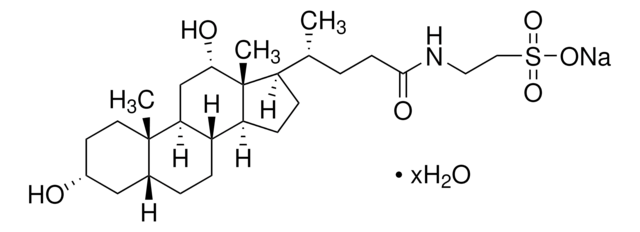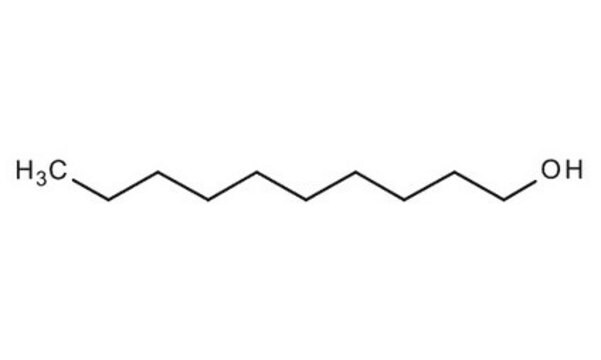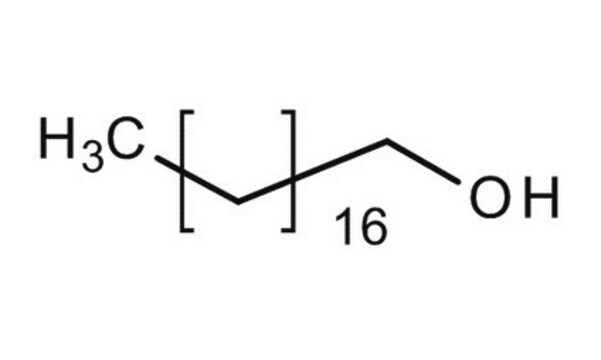443816
1-Dodecanol
ACS reagent, ≥98.0%
Sinónimos:
Alcohol C12, Dodecyl alcohol, Lauryl alcohol
About This Item
Productos recomendados
grado
ACS reagent
Nivel de calidad
densidad de vapor
7.4 (vs air)
presión de vapor
0.1 mmHg ( 20 °C)
Ensayo
≥98.0%
Formulario
solid or liquid
temp. de autoignición
500 °F
lim. expl.
4 %
impurezas
≤0.05% water
color
APHA: ≤10
índice de refracción
n20/D 1.442 (lit.)
bp
260-262 °C (lit.)
mp
22-26 °C (lit.)
solubilidad
water: slightly soluble 1 g/L at 23 °C
densidad
0.833 g/mL at 25 °C (lit.)
cadena SMILES
CCCCCCCCCCCCO
InChI
1S/C12H26O/c1-2-3-4-5-6-7-8-9-10-11-12-13/h13H,2-12H2,1H3
Clave InChI
LQZZUXJYWNFBMV-UHFFFAOYSA-N
¿Está buscando productos similares? Visita Guía de comparación de productos
Categorías relacionadas
Descripción general
Aplicación
- Monododecyl glyceryl ethers via etherification by reacting with glycerol in the presence of 10mol% of 1-bromododecane.
- ω- and (ω-1)-Hydroxy derivatives via hydroxylation reaction catalyzed by frog liver microsomes.
- Dodecanal via oxidation in the presence of sodium bromate and ruthenium catalyst.
Palabra de señalización
Warning
Frases de peligro
Consejos de prudencia
Clasificaciones de peligro
Aquatic Acute 1 - Aquatic Chronic 1 - Eye Irrit. 2
Código de clase de almacenamiento
11 - Combustible Solids
Clase de riesgo para el agua (WGK)
WGK 2
Punto de inflamabilidad (°F)
249.8 °F - closed cup
Punto de inflamabilidad (°C)
121 °C - closed cup
Elija entre una de las versiones más recientes:
¿Ya tiene este producto?
Encuentre la documentación para los productos que ha comprado recientemente en la Biblioteca de documentos.
Los clientes también vieron
Nuestro equipo de científicos tiene experiencia en todas las áreas de investigación: Ciencias de la vida, Ciencia de los materiales, Síntesis química, Cromatografía, Analítica y muchas otras.
Póngase en contacto con el Servicio técnico













